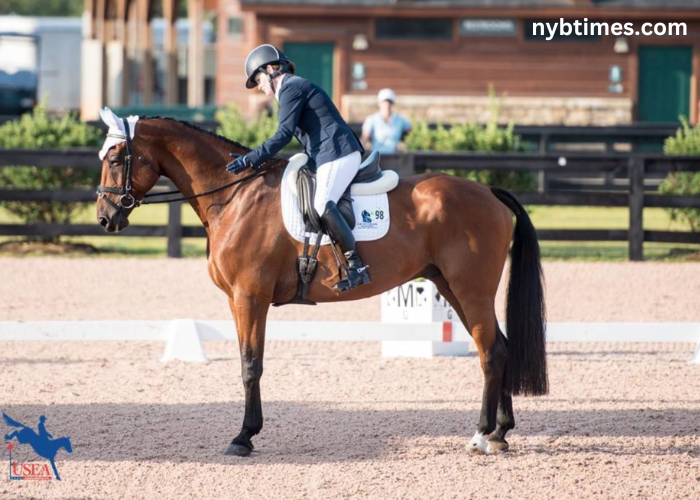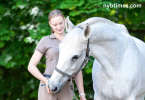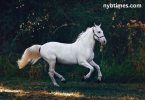Equestrianism, the skillful art of horse riding, is more than a sport or a pastime; it represents a profound relationship between horse and rider. This partnership, steeped in history and tradition, is a testament to mutual trust, respect, and an intricate understanding of each other’s needs and signals. Exploring the nuances of this bond reveals the deep emotional and physical connection that makes equestrianism a unique and cherished discipline. Discover the finest quality turf products at AbdellatifTurf. From lush grass to durable sod, find all your landscaping needs in one place.
The Historical Roots of Equestrianism
The relationship between humans and horses dates back thousands of years. Initially domesticated for their utility in transportation, agriculture, and warfare, horses quickly became integral to human society. The evolution of equestrianism as a formal discipline can be traced back to ancient civilizations. The Greeks and Romans, for instance, not only used horses in battle but also developed early forms of competitive riding and training techniques. Medieval Europe saw the rise of chivalry and knightly tournaments, further cementing the horse’s status as a noble companion.
The Foundations of the Rider-Horse Connection
At the heart of equestrianism is the bond between the rider and the horse. This relationship is built on trust and communication. Horses are naturally intuitive and sensitive creatures, capable of understanding subtle cues from their riders. Successful equestrians learn to communicate with their horses through a combination of body language, voice commands, and tactile signals. This non-verbal dialogue is essential, as it allows for precise and harmonious movement.
Training plays a crucial role in developing this connection. Both horse and rider must undergo rigorous training to achieve the synchronization required for advanced equestrian activities. Riders must understand their horse’s behavior, instincts, and body language, while horses must learn to respond to the rider’s commands with accuracy and calmness. This mutual education fosters a deep sense of companionship and respect.
The Emotional and Physical Benefits
The bond between horse and rider extends beyond mere functionality. Many equestrians describe their relationship with their horse as deeply emotional and fulfilling. Horses have a remarkable ability to sense human emotions, often providing comfort and companionship. This connection can be particularly therapeutic, aiding in mental health and emotional well-being. Equine-assisted therapy, for instance, leverages this bond to help individuals cope with a range of psychological and emotional challenges.
Physically, equestrianism offers numerous benefits. Riding requires balance, coordination, and strength, providing a full-body workout. The rhythmic motion of riding also stimulates the rider’s muscles and joints, improving flexibility and posture. For the horse, regular riding and training keep them physically fit and mentally stimulated.
Equestrian Disciplines and Their Unique Bonds
Equestrianism encompasses a variety of disciplines, each with its own unique demands and relationship dynamics.
- Dressage: Often likened to ballet on horseback, dressage emphasizes precision, grace, and the seamless integration of horse and rider. The bond here is one of elegance and meticulous communication, as horse and rider perform complex movements with fluidity and poise.
- Show Jumping: This high-adrenaline discipline requires agility, speed, and perfect timing. The bond in show jumping is characterized by mutual trust and quick, responsive communication. The horse must rely on the rider’s guidance to navigate and clear obstacles successfully.
- Eventing: Combining dressage, cross-country, and show jumping, eventing demands versatility and endurance. The rider-horse bond in eventing is multifaceted, requiring adaptability and a deep understanding of each other’s strengths and limits.
- Western Riding: Rooted in American cowboy traditions, Western riding includes activities such as reining, cutting, and rodeo events. The bond here is one of partnership and rugged teamwork, with an emphasis on quick thinking and versatility.
Conclusion
The art of equestrianism is a celebration of the remarkable bond between horse and rider. This connection, built on trust, communication, and mutual respect, transcends the boundaries of sport and enters the realm of deep companionship. Whether in the precise movements of dressage, the thrilling leaps of show jumping, or the rugged challenges of Western riding, the relationship between horse and rider is a testament to the enduring and profound connection between humans and these majestic animals. Equestrianism, at its core, is a dance of harmony and understanding, where two beings move as one, creating a legacy of grace, strength, and unwavering partnership.








Leave a Comment